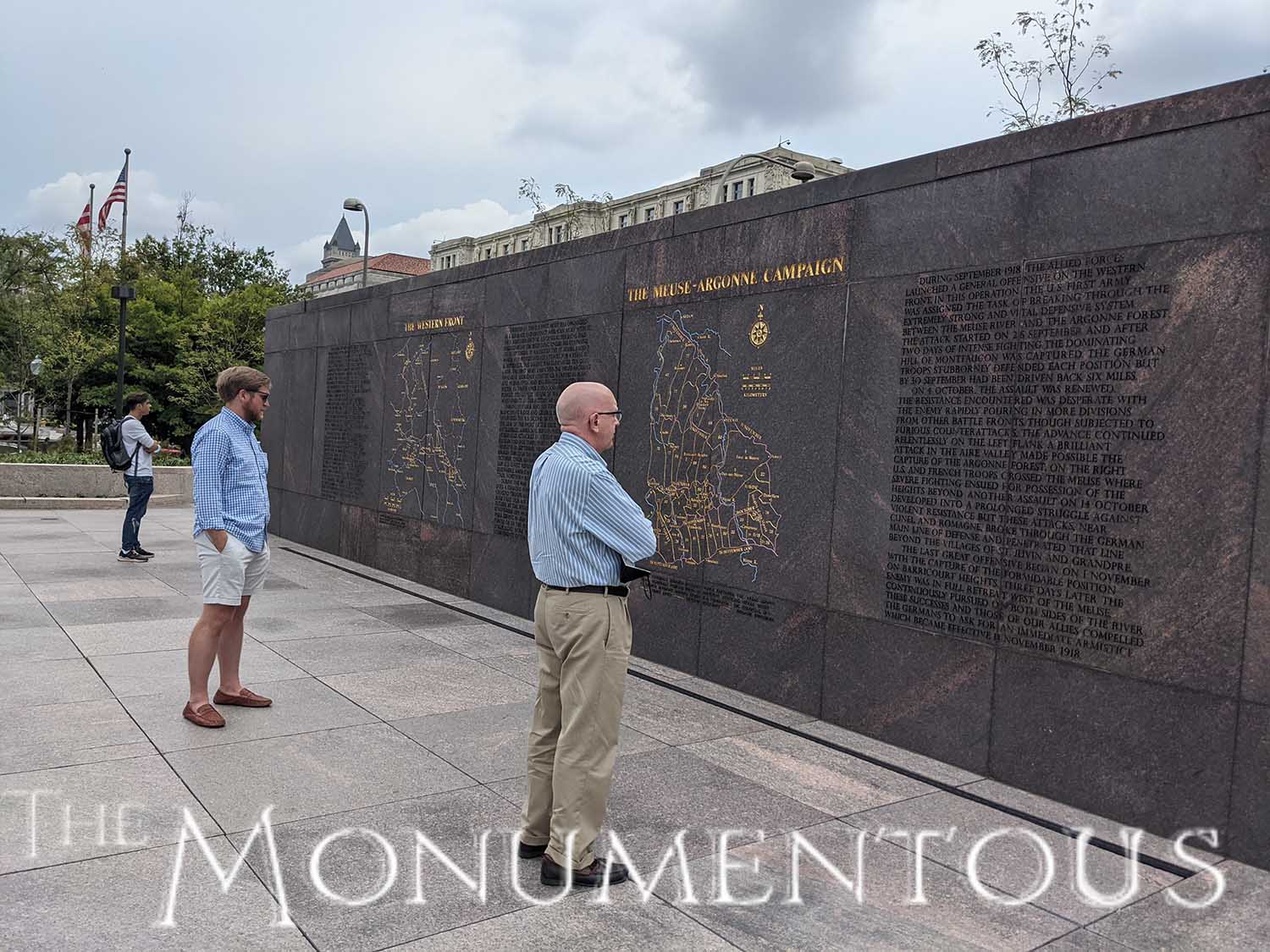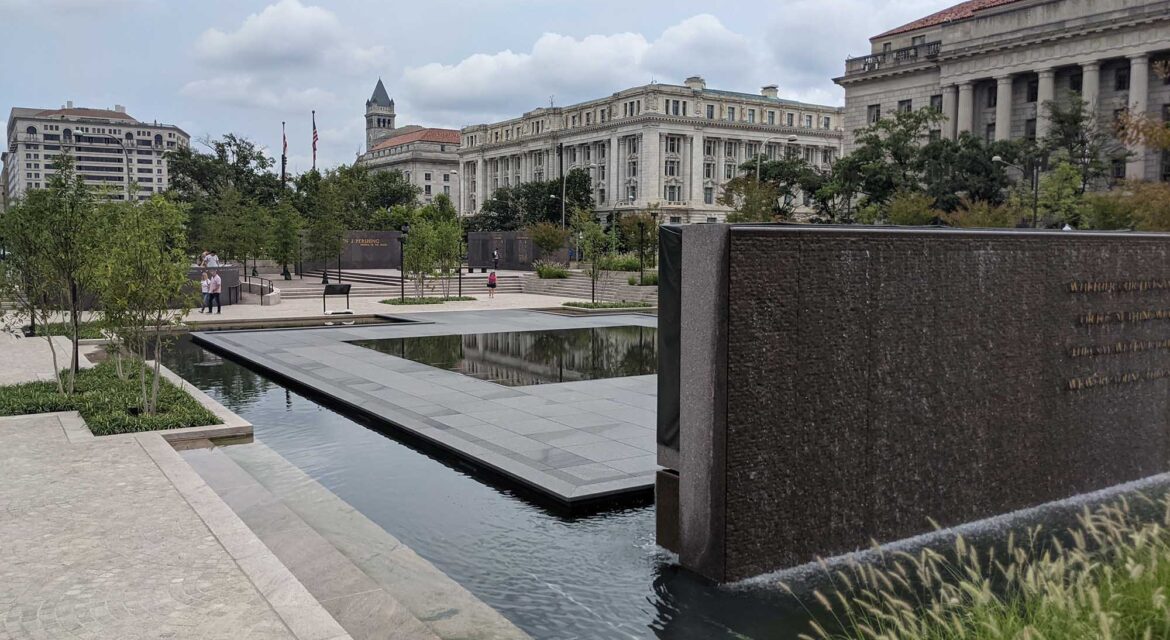 Located just to the east of the White House in Washington D.C., Pershing Park has provided residents and visitors with a green oasis amidst the urban sprawl of the United States’ capital ever since it was created. The space has honored a World War I hero even before it was a park but it has been further transformed to honor all of the heroes from this conflict. In housing the National World War I Memorial, Pershing Park highlights the multiple ways that a landmark can define space while still containing the potential to further change and evolve.
Located just to the east of the White House in Washington D.C., Pershing Park has provided residents and visitors with a green oasis amidst the urban sprawl of the United States’ capital ever since it was created. The space has honored a World War I hero even before it was a park but it has been further transformed to honor all of the heroes from this conflict. In housing the National World War I Memorial, Pershing Park highlights the multiple ways that a landmark can define space while still containing the potential to further change and evolve.

Celebrating a General of the Armies
 In the early 1900s, numerous 19th-century buildings defined the spot where Pershing Park now resides. Cleared in the 1930s, it was designated Pershing Square in honor of John J. Pershing, whose leadership during World War I propelled him to the rank General of the Armies. The only other person to ever hold that rank in the United States is George Washington.
In the early 1900s, numerous 19th-century buildings defined the spot where Pershing Park now resides. Cleared in the 1930s, it was designated Pershing Square in honor of John J. Pershing, whose leadership during World War I propelled him to the rank General of the Armies. The only other person to ever hold that rank in the United States is George Washington.
The space would eventually become known as Pershing Park but it was not defined as an urban park until 1981, when the footprint of the park was enlarged and numerous features were installed. A fountain, concession stand and pool that doubled as an ice rink were significant features but the John J. Pershing General of the Armies commemorative work was by far the most distinct and important of these features. The eight-foot-tall bronze sculpture sits on top of a granite pedestal near the center of the plaza. This spot would eventually include American Expeditionary Forces Memorial that describes Pershing’s achievements in World War I. The south wall contains two battle maps with appropriate inscriptions.
While it contained numerous paths and places to sit and relax, criticisms about the park blending into the background highlighted the potential of the space to be further transformed, which is why the site was mentioned as a potential spot to house the National World War I Memorial. Being selected as the location for this memorial would completely reverse the use of Pershing Park.

Defining the National World War I Memorial
 While the District of Columbia War Memorial that was created in 1931 honors individuals from Washington D.C. who fought in World War I, a desire to create a national memorial commemorating World War I in the nation’s captial began to take shape in the early 2000s. After considering multiple sites, it was eventually decided to create a national World War I memorial at Pershing Park.
While the District of Columbia War Memorial that was created in 1931 honors individuals from Washington D.C. who fought in World War I, a desire to create a national memorial commemorating World War I in the nation’s captial began to take shape in the early 2000s. After considering multiple sites, it was eventually decided to create a national World War I memorial at Pershing Park.
Initial ideas for a National World War I Memorial saw the park being razed and built anew, but a plan to use the existing landscape in a way that would transform the space was eventually selected. The basic layout of the park would remain but the way the space was used would change on account of a sculpture and stone plaza that defines the middle of the space.
The memorial is focused around a bronze relief called A Soldier’s Journey, which consists of four distinct sections that show the story of a soldier who leaves his family, sees combat and then returns to his family after receiving medical care. Surrounded by water, it features a fountain on the backside. A “belvedere” with historical exhibits and information is also a prominent part of the National World War I Memorial.
While Pershing Park is now defined by the National World War I Memorial, it still offers the same share of incredible views, iconic vistas and historical connections as it did when it was first created. This transformation showcases what it can mean for a landmark to retain what makes it significant while evolving into something new.

Building on a Legacy
 In honoring John J. Pershing in such a specific way, Pershing Park always had an important connection to World War I. The installation of the World War I Memorial has built on this legacy while also transforming it, highlighting how landmarks can simultaneously connect the past and future of a space and a community.
In honoring John J. Pershing in such a specific way, Pershing Park always had an important connection to World War I. The installation of the World War I Memorial has built on this legacy while also transforming it, highlighting how landmarks can simultaneously connect the past and future of a space and a community.

